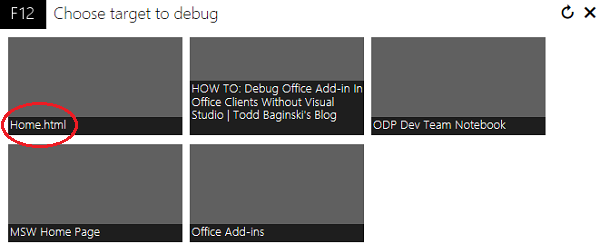Dev C%2b%2b Add Icon To Exe
Use the dart2native command to AOT (ahead-of-time) compilea Dart program to native x64 machine code.The dart2native command is supported on Windows, macOS, and Linux.
Dev C 2b 2b Add Icon To Exe Converter
I'm trying to add an icon to my C console application but when I try to compile the following code I get these errors. The first is my resources.rc and the second file is my main.cpp. Resource script: #ifndef RESOURCERCINCLUDED #define RESOURCERCINCLUDED MAINICON ICON 'icon.ico' #endif // RESOURCERCINCLUDED` C source. It's just that white box windows displays when somethings is wrong (missing files, etc.). How can I use an icon for my exe? I need it not to be updated at runtime, I just want to compile with icons. I'm using Visual C Studio 2010, regular c project (no form). Download Slimm Bat to Exe - Convert BAT files to EXE, add a custom icon from your computer and pick from the many methods and options available in this neat software solution. Add icon to exe file with Dev-C: TheWind. Posted on 11:08 PM Hi, I have created an executable console program with Dev-C. I don't know how Dev-C handles resources but it should be in a similar manner (a quick research shows that it seems to use rc script files too). You have to add an icon resource by providing an ID and the path to the icon file or edit the existing resource script file to change the path to your icon file. See also About Resource Files (Windows). If you create a C CLR winform project, you can open the app.rc and find some code like this: ICON 'app.ico'. Please change the 'app.ico' to your own icon. Put the icon file to the project directory. After you change the icon of exe, you need to comilpe the project again. To create a new icon or cursor In Resource View, right-click your.rc file, then choose Insert Resource. If you already have an existing image resource in your.rc file, such as a cursor, you can right-click the Cursor folder and select Insert Cursor. In the Insert Resource dialog box, select Icon or Cursor and choose New.
Note: To execute Dart code without AOT compiling it, use dart, the standalone Dart VM.
The output of dart2native is eithera standalone executable (the default)or an AOT snapshot that you can run with the dartaotruntime command.A standalone executable is native machine code that’s compiled fromthe specified Dart file and its dependencies,plus a small Dart runtime that handlestype checking and garbage collection.
An AOT snapshot doesn’t include the Dart runtime.Consider using snapshots if you’re distributing multiple programsand disk space is limited.
Creating standalone executables
Here’s an example of using dart2native to create a standalone executable:
You can distribute and run that executable like you wouldany other executable file:
-Step-3.jpg/v4-460px-Download-Dev-C%2B%2B-(Ide)-Step-3.jpg.webp)
Creating AOT snapshots
To create an AOT snapshot, add -k aot to the command:
You can then run the app using the dartaotruntime command:
Known limitations
The initial (Dart 2.6) version of dart2native has some known limitations:
- No cross-compilation support (issue 28617)
- The compiler supports creating machine code only forthe operating system it’s running on.You need to run the compiler three times —on macOS, Windows, and Linux —to create executables for all three operating systems.A workaround is to use a CI (continuous integration) providerthat supports all three operating systems.
- No signing support (issue 39106)
- The format of the executables isn’t compatible withstandard signing tools such as codesign and SignTool.
- No support for dart:mirrors and dart:developer
- The code compiled by
dart2nativecan use all of the other librariesthat the Dart VM supports.For a complete list of the core libraries you can use,see the All and AOT entries in thetable of core Dart libraries.
Icons
Tip: If one of these issues is important to you, let the Dart team know by adding a “thumbs up” to the issue.
Options
The first argument to dart2native is the path to the main Dart file: Text color in dev c%2b%2b.

You can use the following options:
-D <key>=<value>or--define=<key>=<value>- Defines an environment declaration,which can be read using the
String.fromEnvironment()constructor.To specify multiple declarations, use multiple options oruse commas to separate key-value pairs. --enable-asserts- Enables assert statements.
-hor--help- Displays help for all options.
-k (aot exe)or--output-kind=(aot exe)- Specifies the output type, where
exeis the default(a standalone executable). To generate an AOT snapshot,use-k aot. -o <path>or--output=<path>- Generates the output into
<path>. If you don’t use this option,the output goes into a file next to the main Dart file.Standalone executables have the suffix.exe, by default;the AOT snapshot suffix is.aot. -p <path>or--packages=<path>- Specifies the path to the package resolution configuration file.For more information, seePackage Resolution Configuration File.
-vor--verbose- Displays more information.
Myspace Add Icon Code
dart2aot
Dev C++ Add Icon To Exe Installer
Releases before Dart 2.6 containeda tool named dart2aot that produced AOT snapshots.The dart2native command replaces dart2aot andhas a superset of the dart2aot functionality.